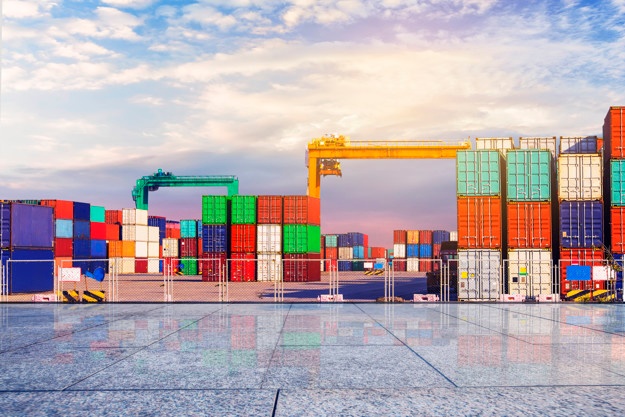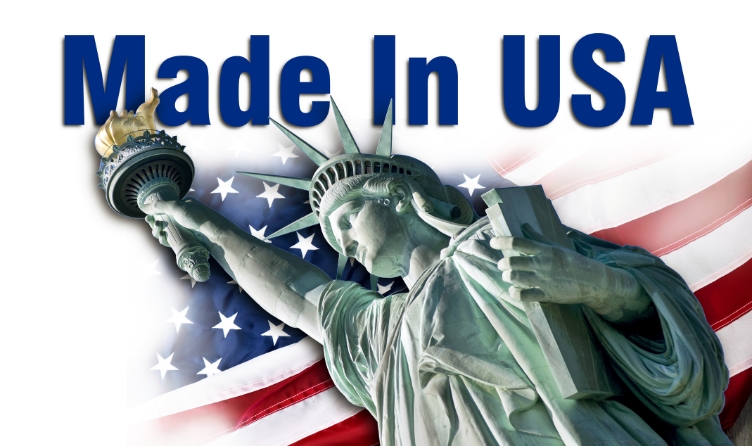Made In the USA is Making a Comeback in the Wake of Supply Chain Shortages
5 Mins Read
Published on: 20 January 2022
Last Updated on: 09 October 2024

toc impalement
Once upon a time, the “Made in the USA” moniker stood for quality and pride. Goods were not only being manufactured in our own country but they were also considered dependable and therefore long-lasting. They had value. What’s more, goods made in the USA also put Americans to work.
For instance, union clothing made in the USA stood and still stands for quality. Full stop. However, for decades, manufacturing of products from clothing to iPhones was shipped overseas to China and other countries where labor is cheap and environmental regulations almost nonexistent.
But now, in the wake of the ongoing supply chain issues that are plaguing both businesses and consumers, a new call for products made in the good old USA is reemerging.
According to a new report, the United States has been issued a double whammy between the COVID-19 crisis and the supply chain shortages of consumer goods which caught federal government officials flatfooted. The shortages include a wide array of products from prescription medicines to car parts to bicycles.
The problems get worse since U.S.-based companies find it impossible to assemble goods that require components from overseas markets, like computer chips from Taiwan for instance. The problem isn’t affecting all companies the same way, or so the experts say.
Regardless of the global supply chain problem, some U.S. businesses and manufacturers are now relying on domestic suppliers to provide them with the parts and components they need to keep their businesses running as smoothly as possible.
Why Made In USA Lost Its Essence?

The ‘Made In USA’ moniker was seen as a mark of quality and assurance. However, the moniker went through some s]depreciating effects that rendered it useless.
However, this was not a sudden incident. It is a product of a market shift and a bunch of accumulated incidents made it happen. Here are some of the significant reasons why the moniker lost its essence.
Here we go!
Transoceanic Supply Chains
But for the most part, U.S. companies continue to struggle. What’s said to be standing in the way of their success is “a breakdown in the transoceanic supply chains” which extend from Asian ports to American ports such as those in LA and Long Beach.
This breakdown, in turn, extends all the way to America’s heartland where many manufacturing plants are located.
What has been exposed during the crisis is the U.S.’s overreliance on imported goods. So then, what’s the obvious solution? America must start the process of reclaiming these key manufacturing sectors in order to become more self-reliant.
What’s promising is that at least some U.S. manufacturers are already displaying the overall advantages of working with domestic suppliers.
The COVID-19 Domino Effect
Say the experts, here’s how the COVID-19 pandemic led to some of the product shortages: One prime example is that when the virus first emerged from out of China, many countries immediately banned “essential medicines and health care materials” in order to conserve their own supplies.
What this resulted in was that U.S. hospitals were left to struggle to provide even the most basic medicines, protective equipment, and healthcare materials.
Thus began what’s been described as a kind of supply chain shortages domino effect throughout many industries from healthcare to automobiles to lumber. Ports and factories in many countries including China either slowed down production or stopped altogether.
A direct result of this was an increase in demand for typical household goods that you usually find at your local mega-mart or even on Amazon. Overseas suppliers continue to find it almost impossible to keep up with the demand.
Congestion at Major Seaports

Due to logistical problems, many cargo ships hit a major bottleneck. The production issue lead to major collapse of the oceanic routes. This resulted in a pceanic traffic jam. Countless shipes were backep up and had to wait days to gain access into the US water.
This backlog was instrumental for inflating the overall prices of goods in China.Which lead to higher prices worldwide. This led to a cascading effect that lasted for a long period of time.
The consequence of these price spikes is that U.S. consumers are not only facing product shortages but significant price increases on the goods they can actually get their hands on.
Domestic producers are also grappling with the overseas components they need to assemble products like trucks and cars.
Surprisingly, major news outlets had a lackluster reaction to the whole deal. In fact many outlets refused to cover the news. Additionally, these outlets were also instrumental in refusing to accept the obvious solution. Therefore, the role was to further the problem and not solve it.
That is, the production of more goods in the U.S., along with the resumption of natural gas production, which the current POTUS stopped with a stroke of a pen, left the U.S. once again dependent on foreign energy sources.
This presidential mandate was a major decision that affected all Americans. Moreover, the general population felt that this was not a well-thought-out plan. As a result, there was general resentment toward the decision. Which resulted in political unrest.
Washington, D.C., must face facts. Relying on China for cheaply made goods is a dead end. American must focus on rebuilding its domestic manufacturing base and reinstating the energy independence (and exports) that we enjoyed during the four-year period between 2016 and 2020.
Several right-wing experts believe that banking all your faith in cheaper and more accessible Chinese goods is dangerous. This way, American citizens is funding China in its effort to grow. Which can lead to grave political consequences.
The Movement’s Significance

The overall popularization of the movement was due to several factors. However, the effects that it has left on the U.S. market are longstanding. Therefore, understanding them is seminal for understanding the business landscape of the country.
Here are some of the significant changes that the movement brought.
- Brands deliberately create situations so that they can market their products as made in the USA. This was primarily prevalent for denim brands.
- American car brands started coming to the forefront and started competing with their Italian, German, or other European counterparts. This greatly influenced the automobile industry.
- Food brands like KFC, Wendy’s, Burger King, etc., started gaining prominence worldwide.
The Final Thought
The Made in the USA moniker might not have the same weightage as before. However, it does come with an extensive history that is simply amazing. A history that is connected to wars and American history as a whole.
Keep following our page for more such content.
Additional Reading:


















Comments Are Closed For This Article